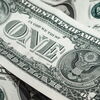Maine's richest 1% rank modestly among the wealthiest Americans
Some states are rich, some are poor — Americans’ financial well-being varies geographically almost as much as their politics. But a new study takes a different look at disparities in wealth across the country.
Windfall, a San Francisco-based financial data mining firm, this month released a report showing the net worth required to be among the top 1% of the richest individuals in each state and the District of Columbia. The analysis uses population estimates from the 2019 U.S. Census Bureau and net worth estimates from Windfall’s wealth database of more than 80 million households.
In Maine, you need net assets of at least $1,508,803 to make the wealthiest 1%. That fortune places Maine No. 39 in a ranking of states according to the highest minimum amounts, just below Ohio but edging out North Dakota.
Maine is the only eastern state among the lower half of the rankings; the next-lowest in the East is Pennsylvania, No.25, with a minimum of $2,002,334.
Among New England states, Massachusetts ranks highest, at No. 4, with a 1% level of $4,365,167. Connecticut is also in the top 10, at No. 9, with a minimum of $3,603,629. Vermont is No. 13, $3,105,232; Rhode Island, No. 14, $3,008,866; and New Hampshire, No. 18, $2,701,801.
The state where the wealthiest 1% are the wealthiest, Hawaii, has a minimum of $6,905,465. California, whose threshold is $6,806,380, is close behind. Mississippi ranks No. 51, the poorest, with $766,205.
The threshold amount in Maine is 428% more than the median net worth of the state’s residents, $285,696, according to Windfall. The report also identified Susan Alfond, a Scarborough resident and philanthropist who is the daughter of Dexter Shoe Co. founder Harold Alfond, as the state’s wealthiest individual.
Wealth inequality in the U.S. has ballooned in the last several decades, with the gap between the richest and poorest Americans more than doubling between 1989 and 2016. Most recently, according to Windfall, the divide has broadened for two reasons: increasing investment by the wealthy in the stock market, and the coronavirus, which disproportionately affects those near the bottom of the economic ladder.
In the first nine months of the pandemic, from March 2020 to December, the net worth of U.S. billionaires increased 36%. The top 1% of Americans have a combined net worth of $34.2 trillion, according to October 2020 Federal Reserve data, representing more than 30% of all household wealth in the U.S.










0 Comments